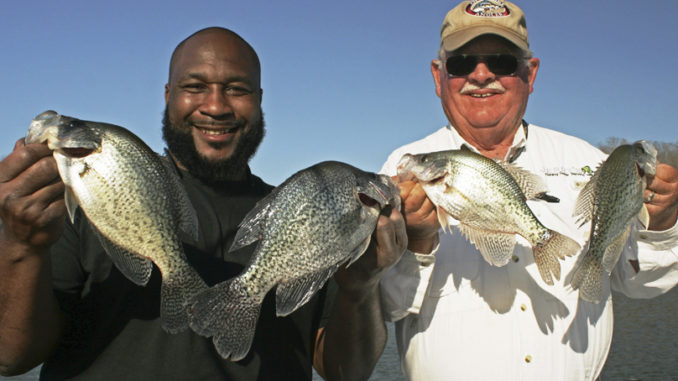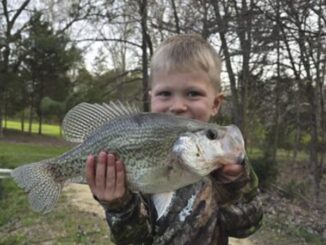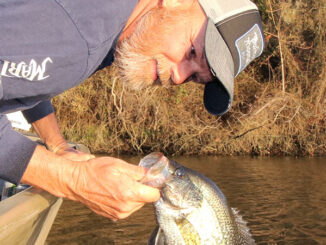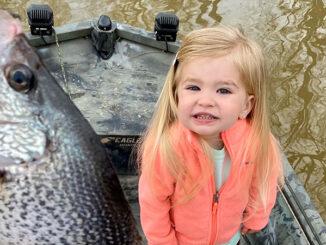
Every piece of the puzzle is critical
Retired fishing guide Jerry Neeley said that productive trolling is not a random, haphazard method of fishing; it’s actually a very precise and well-planned tactic.
“I’ve spend a lot of time trolling over the past 55 years and realized early on that everything about the process is crucial to success, starting with the actual rigs,” he said.
Neeley said his trolling, also know as long-lining, begins with using light line. He prefers 6-pound test in a high-visibility color spooled onto small spinning reels. He uses both 10- and 12-foot Berkeley Crappie Pro rods with 1/16-ounce jigs, varying the colors to determine the best for that day.
“Color of the jig and grub is crucial and changes daily,” he said. “I have my go-to colors. Most of the time I prefer something with chartreuse in it. But the John Deere and junebug patterns are very good on Lake Wylie.
“The high-visibility line is great when making turns so I can see the rigs and keep them from tangling. Tangled lines are going to happen occasionally when trolling, but keeping it to a minimum of lost time is important. The different length of rods also helps me space the rigs out. I’ll use eight rigs when trolling, and that gives me good coverage but a manageable number of lines when making turns and reeling in crappie. Too many lines will actually reduce trolling efficiency.”
Watch your speed
Neeley said trolling speed is crucial; during the post-spawn, he’ll be trolling at 0.9 and 1.0 mph as a general guide.
“By May, the water temperature is warmer, and the speed needs to be higher,” he said. “This compares to times during the prespawn when I may be trolling at 0.6 to 0.7 miles per hour, and during the spawn maybe a little faster. Speed is crucial in terms of provoking a bite, but also in relation to depth. By slowing my speed by 0.1 mph, I can work my lures a foot or so deeper or get the opposite effect by increasing speed. Often, that minor depth difference will make a major impact on success.”
The final major consideration is where he trolls.
“I’ve found crappie will orient to specific types of bottom areas, even if they are suspended,” he said. “I troll over points, along creek or river ledges and sometimes right down the middle of a channel. I watch the graph closely and I’ll almost always be marking a lot of fish and will control the trolling route to match up with where fish are marked.”





Be the first to comment